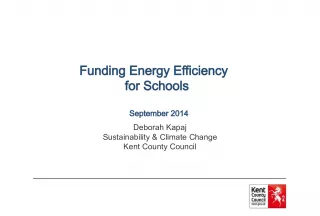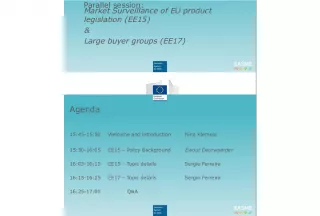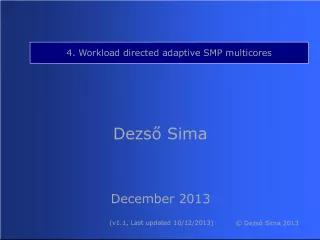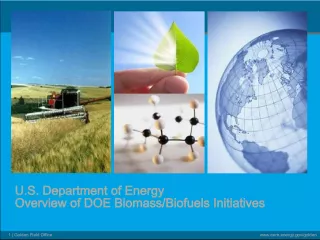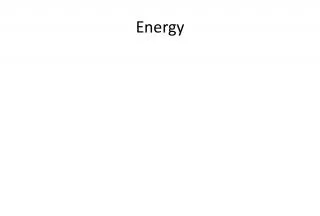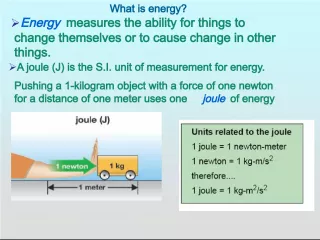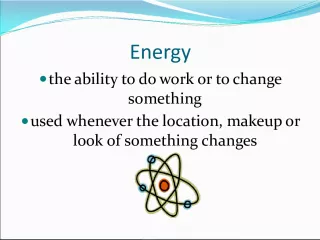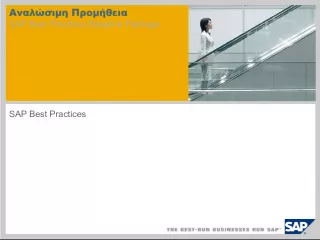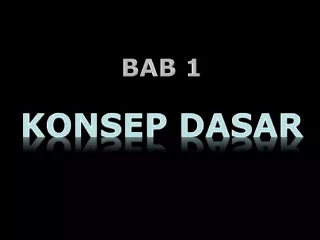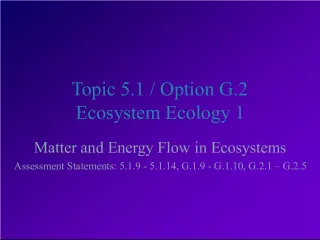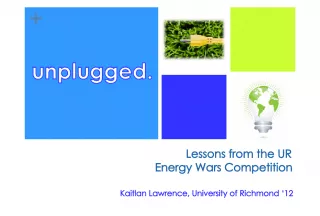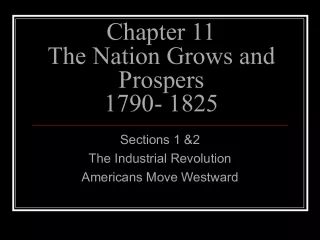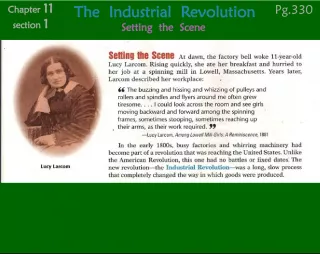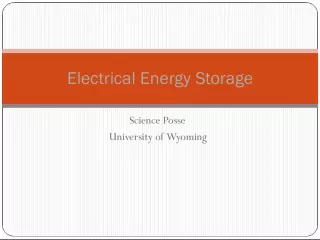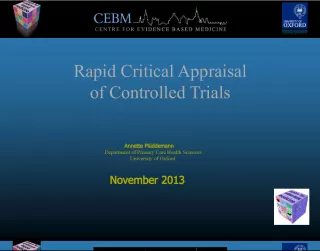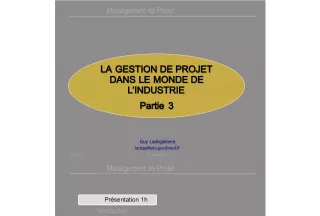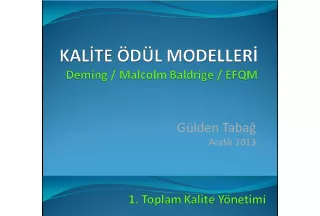Improving Industrial Energy Efficiency
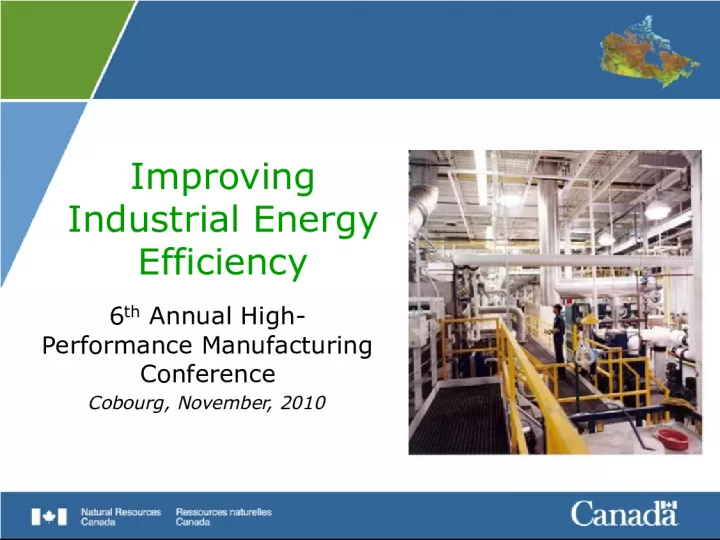

This presentation will focus on strategies for improving energy efficiency in the industrial sector, with a particular emphasis on high performance manufacturing. Attendees will learn about best practices, case studies, and the latest technologies in industrial energy management.
- Uploaded on | 0 Views
-
 inacollins
inacollins
About Improving Industrial Energy Efficiency
PowerPoint presentation about 'Improving Industrial Energy Efficiency'. This presentation describes the topic on This presentation will focus on strategies for improving energy efficiency in the industrial sector, with a particular emphasis on high performance manufacturing. Attendees will learn about best practices, case studies, and the latest technologies in industrial energy management.. The key topics included in this slideshow are industrial energy efficiency, high performance manufacturing, energy management, best practices, case studies,. Download this presentation absolutely free.
Presentation Transcript
1. Improving Industrial Energy Efficiency 6 th Annual High- Performance Manufacturing Conference Cobourg, November, 2010
2. 2 Presentation Overview Why Energy Efficiency CME/NRCan benchmarking survey Government of Canada GHG emissions policy Prices? Where to begin The CIPEC Approach 7 Steps to improving your energy management practices Practical examples
3. 3 148 plants participated in the study between October 2008 to July 2009 CME/NRCan Survey
4. 4 Low implementation of technical best practices (TBPs) Most plants have implemented 42 percent of TBPs Small- and medium-sized plants have implemented almost 10 percent less TBPs than large plants Technical best practices
5. 5 Low implementation of MBP in Primary Metal manufacturing Other manufacturing Fabricated Metal manufacturing Low implementation of management best practices (MBPs) Higher implementation rates of MBPs were observed in : Chemical Non-metallic Mineral Transportation and Machinery Food and Beverage Management Best Practices
6. 6 Report findings Energy projects managed on an ad-hoc basis, while best practices not widely implemented. Large plants have implemented, on average, close to 30 percent more MBPs than SMEs. When a company follows management best practices, they generally will have a higher implementation rate for technical best practices.
7. 7 Report findings If all the remaining economically feasible best practices were implemented, total Ontario industrial energy use would decrease from 2007 levels by 29% Reference Case and Economic Potential Scenario energy use for all industry
8. 8 Source: NRTEE Getting to 2050 Climate Change Policy Additional reduction GHG Emissions for Industry 610 Mt Canadas GHG emissions target for 2020 240 Mt the amount Canada plans to reduce GHG emissions by 2020 120 Mt the amount of GHG emission reductions to come from the industrial sector by 2020 Under the Government of Canada revised Turning the Corner a plan to reduce greenhouse gas emissions by 17% from 2005 levels by 2020. Energy efficiency (EE) key to Canada achieving its climate change commitments!
9. 9 Rising Energy costs The report, done for Canadian Manufacturers and Exporters (CME) projects electricity costs for business could jump by between 47.1 and 63.7 per cent by 2015. - CME September, 2010
10. 10 Industry Challenges Difficult to obtain company financing to implement EE projects. Too much effort to access assistance, funding and incentives. Lack of human resources to focus on energy management. Production is the dominant focus. Do not know where to find reputable energy service providers. Do not know how to identify and assess EE opportunities. Have limited knowledge of EE opportunities/products. Advanced EE products are not easily available.
11. 11 7 Steps to Good Energy Management 1. Get Involved 2. Assemble an Energy Team 3. Train Staff 4. Assess Energy Use 5. Eliminate Waste - Maximize Efficiency 6. Capital Projects 7. Report and celebrate Where To Start?
12. 12 An industry/government partnership to promote energy efficiency cut operating costs improve productivity reduce GHG emissions and air pollution Canadian Industry Program for Energy Conservation CIPEC 1.
13. 13 Executive Board CIPEC Leader Companies Sector Task Forces & Sector Associations Task Force Council Natural Resources Canada supports CIPEC at all levels CIPEC Structure
14. 14 CIPEC Portfolio Tools CanMost Boiler Efficiency Calculator Energy Savings Toolbox RETScreen International Training D2$ Energy management workshops Qualified specialists Customized for companies and associations Incentives ecoEnergy Retrofit Industrial assessments Pilot projects Solar energy for heating Tax incentives (Class 29, 43.1, 43.2 ) Information Industrial Sector Task Forces Technical guide books Employee Awareness CIPEC.gc.ca web site Heads Up CIPEC newsletter
15. 15 Choose an energy champion Select team members Plant engineer, maintenance staff, financial advisor Meet regularly to develop and implement an energy management plan NRCan employee awareness program Team Up for Energy Savings Assemble Energy Team 2.
16. 16 Dollars to $ense Workshops Spot the Energy Savings Opportunities Energy Monitoring and Tracking Energy Master Plan Energy Efficiency Financing Energy Efficiency Training NRCan covers 50% of the cost of a customized workshops tailored to companies and sectors Training to Build Capacity + 3.
17. 17 Assess Energy Use 4.
18. 18 18 Waste and Efficiency 1. From the point of Purchase 2. To the point of End-Use 3. And, back to the point of Purchase (or supply) 5.
19. 19 19 Checklist of Opportunities HVAC Motors Fans and Pumps Fuel-Fired Equipment and Boilers Insulation Refrigeration Compressed Air Lighting Heat Recovery
20. 20 20 Operating cost after energy efficiency project Energy & non-energy savings 0 500,000 1,000,000 1,500,000 2,000,000 2,500,000 1 2 3 4 5 6 7 8 9 10 Years Annual Operating Cost Avoided Cost from EE project Capital Projects Do nothing operating cost 6.
21. 21 101 Bayswater Ave.
22. 22 Windows vs Furnace ROI New Furnace: $1,600 $4,500 = 37% ROI Windows: $500 $15,000 = 3.3% ROI Simple Payback New Furnace: 2 years 10 months Windows: 30 years Which is the better economic decision?
23. 23 Report and celebrate Pulp and paper company 85 employees $600,000 annual energy bill $200,000 lighting retrofit project $95,000 in direct incentives $37,000 ecoENERGY Retrofit Incentive $58,000 from utility 7. Savings: - $100,000 per year - ROI < 13 months
24. 24 ecoENERGY incentive Auto Parts Manufacturer 70 employees $1 million+ annual energy bill $100,000 air compressor retrofit $30,000 in direct incentives $20,000 ecoENERGY Retrofit Incentive $10,000 utility Savings: - $50,000 per year - ROI < 18 months
25. 25 ecoENERGY Incentive Food & beverage plant 80 employees $370,000 annual energy bill $37,000 boiler retrofit project $9,000 ecoENERGY Retrofit Incentive Savings: - $21,000 per year - ROI < 16 months
26. 26 Who What Creates Savings? Source: Good Practice Guide 84 Managing and Motivating Staff to Save Energy "...those of us who call ourselves energy analysts have made a mistake...we have analyzed energy. We should have analyzed human behavior." (Cherfas quoting Schipper in Science, 1991)
27. 27 Where to Start Become a CIPEC Leader! Go to: CIPEC.gc.ca For more information: Richard Janecky Office of Energy Efficiency Natural Resources Canada Tel: 613.992.3286 Cel.: 613.808-4002 E-mail: rjanecky@nrcan.gc.ca
